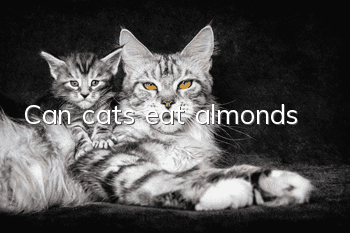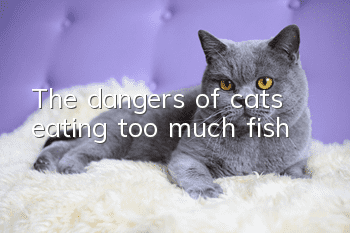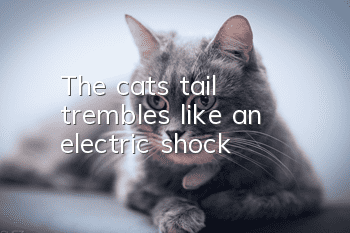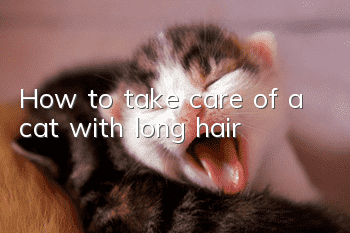Can cats eat almonds?

Almonds were domesticated thousands of years ago in the Middle East. This is possible because a mutation in wild almonds causes the split between bitter and sweet almonds. For those unfamiliar, wild almonds contain high amounts of amygdalin, which is a major source of amygdalin, and the toxic amygdalin, which in turn is a major source of toxic amygdalin. This mutation inhibited the production of these substances, giving rise to the ancestor of the sweet almond. Both bitter and sweet almonds exist in modern times. However, the vast majority of almonds we eat are sweet almonds, which makes sense because their bitter counterparts are extremely toxic when unprocessed. Sweet almonds still contain laetrile, but in very small amounts, which shouldn't be a problem under normal circumstances.
Can cats eat almonds?
Some cat owners may wonder whether cats can eat almonds. If so, they should know that almonds are not toxic to cats. However, cat owners should not feed almonds to their cats under any circumstances, for a number of reasons.
First of all, the almonds we eat still contain a small amount of laetrile. Therefore, they may suffer cyanide poisoning from eating too much. Potential consequences of cyanide poisoning include hyperventilation, dilated pupils, gastrointestinal distress, shock, and even death, which means it's better to be safe than sorry. This is especially true because cats are much smaller than humans, which means that things that aren't a problem for us may not be a problem for them.
Secondly, almonds contain a lot of fat. This can also cause gastrointestinal upset in cats. Eating too much fat can cause more serious problems for your cat in the long run. For example, pancreatitis is when the pancreas becomes inflamed. Even milder cases can be quite unpleasant. At the same time, severe cases can be life-threatening.
Third, almonds are often eaten with things that are very harmful to cats. Salted almonds, for example, are a serious problem because cats can easily eat too much salt, leading to salt poisoning. However, salt is not the worst potential additive. After all, chocolate almonds are also popular, which is not good because chocolate contains caffeine and theobromine. Both substances are toxic to our feline companions.
Fourth, almonds are a potential choking hazard. Cats don't chew their food. Instead, they are supposed to tear off small pieces of flesh before swallowing them whole. Therefore, they are not very good at breaking down almonds into more manageable pieces on their own. Of course, cat owners can break the almonds into smaller, more manageable pieces for their cats to eat. However, this raises the question: why would cats do this when almonds are not so good for them? If anything, it's the opposite. As always, if cat owners are curious about whether their cat can eat, they should contact their veterinarian for an expert opinion on the matter.
For them,It's not difficult to check if most cats can eat. The problem is, one particular cat is not guaranteed to match the majority of cats when it comes to what cats can and cannot do. Therefore, it is a good idea for cat owners to seek approval from their veterinarian before proceeding further. At this point, your veterinarian is also a useful source of information on the best way to feed your cat, which can be at least as helpful as whether or not your cat can eat. The vet will be here to help, so be sure to use them.
Can cats eat other nuts and seeds?
Cat owners may be curious about whether cats can eat other nuts and seeds. There is no simple and clear answer to this question. However, this is a good question because we eat so many nuts and seeds, which means our cats are constantly exposed to them too. Generally speaking, it's not a good idea to feed nuts to cats. Many of the issues with almonds apply to other nuts as well, although technically almonds are not a nut but a stone fruit. High fat, high fiber and high calories means eating too much fat, high fiber and high calories can lead to gastrointestinal upset or worse. Beyond that, there are some nuts that are more concerning than others.
For example, raw cashews are clearly problematic for cats. Similarly, pistachios are obviously a choking hazard because they often have something on them that cats shouldn't eat. People interested in mold should also pay close attention to anything that has mold growing on it, as there is a good chance it could cause problems for cats as well. Even if cat owners choose to feed their cats supposedly safe nuts, they should do so in moderation while supervising the process from start to finish.
As for seeds, they are also high in fat and calories. With this in mind, interested parties should also feed their cats seeds in moderation so they can minimize the likelihood of problems. Also, supervision is good because it will allow them to intervene more quickly when problems arise. Beyond that, there are some common sense rules that should apply.
First, do not shell the seeds as this may cause suffocation and may hinder the digestive system.
Second, do not give the seeds any toppings, as many of the most common toppings can be very harmful to cats.
Third, the seeds themselves are fully capable of preventing danger, which is why supervision is so important. Beyond that, people interested in fruit seeds should be very careful. Enough of them are poisonous or otherwise problematic that fruit seeds should be avoided entirely to stay safe.
- The cat ate a piece of potato chips. Is it okay?
- Why does the cat keep licking one part?
- The seven things cats are most afraid of
- Why do cats often vomit cat food?
- Why do cats like to step on their breasts?
- What is the full name of British short name?
- How to give birth to an American shorthair cat
- What to do if a cat is born prematurely
- Scratched by an unvaccinated cat
- Does the cat recognize its home and owner?



